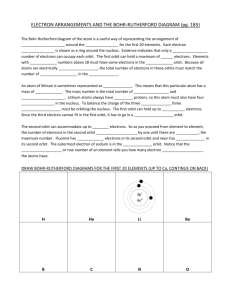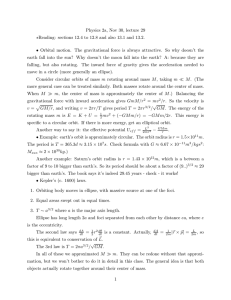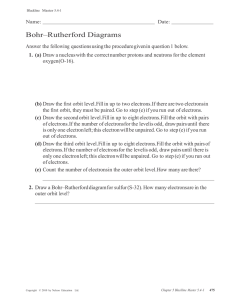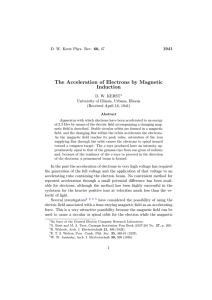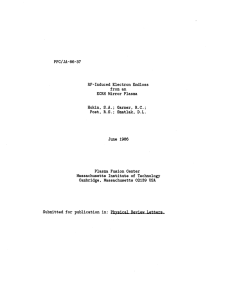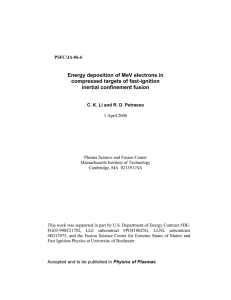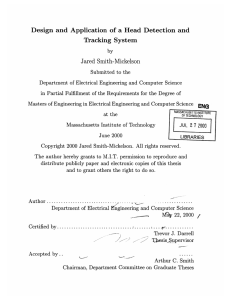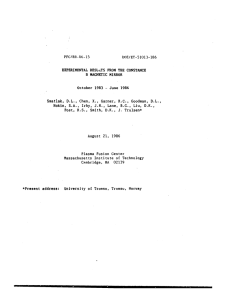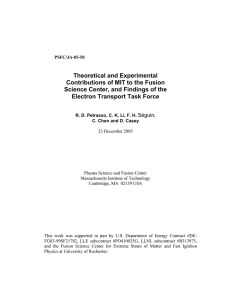tions of the hyperbola and the ellipse define a “trapped”... occupy this space unless some form of scattering or possibly...
advertisement
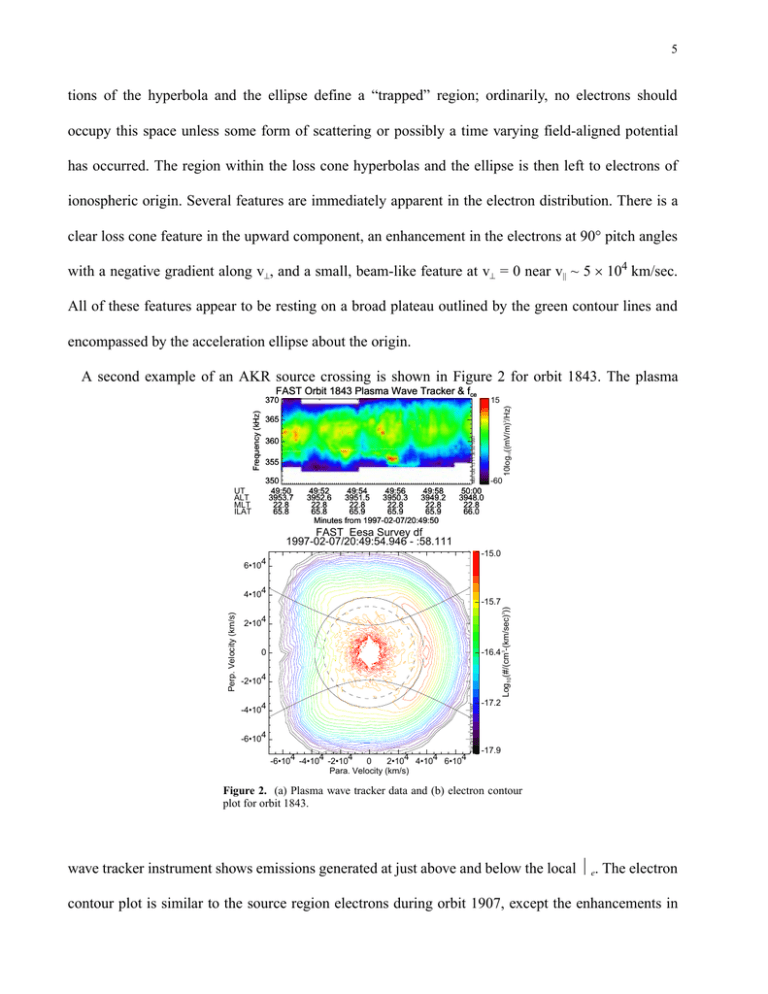
5 tions of the hyperbola and the ellipse define a “trapped” region; ordinarily, no electrons should occupy this space unless some form of scattering or possibly a time varying field-aligned potential has occurred. The region within the loss cone hyperbolas and the ellipse is then left to electrons of ionospheric origin. Several features are immediately apparent in the electron distribution. There is a clear loss cone feature in the upward component, an enhancement in the electrons at 90° pitch angles with a negative gradient along v⊥, and a small, beam-like feature at v⊥ = 0 near v|| ~ 5 × 104 km/sec. All of these features appear to be resting on a broad plateau outlined by the green contour lines and encompassed by the acceleration ellipse about the origin. A second example of an AKR source crossing is shown in Figure 2 for orbit 1843. The plasma FAST Orbit 1843 Plasma Wave Tracker & fce UT ALT MLT ILAT 10log10((mV/m)2/Hz) 15 365 Mon Oct 13 11:36:50 1997 Frequency (kHz) 370 360 355 350 49:50 3953.7 22.8 65.8 49:52 49:54 49:56 49:58 3952.6 3951.5 3950.3 3949.2 22.8 22.8 22.8 22.8 65.8 65.9 65.9 65.9 Minutes from 1997-02-07/20:49:50 -60 50:00 3948.0 22.8 66.0 FAST Eesa Survey df 1997-02-07/20:49:54.946 - :58.111 -15.0 6•104 -15.7 2•104 0 -16.4 -2•104 Tue Oct 14 14:13:26 1997 -4•104 -6•104 -6•104 -4•104 -2•104 0 2•104 4•104 6•104 Para. Velocity (km/s) Log10(#/(cm3-(km/sec)3)) Perp. Velocity (km/s) 4•104 -17.2 -17.9 Figure 2. (a) Plasma wave tracker data and (b) electron contour plot for orbit 1843. wave tracker instrument shows emissions generated at just above and below the local Ωe. The electron contour plot is similar to the source region electrons during orbit 1907, except the enhancements in

